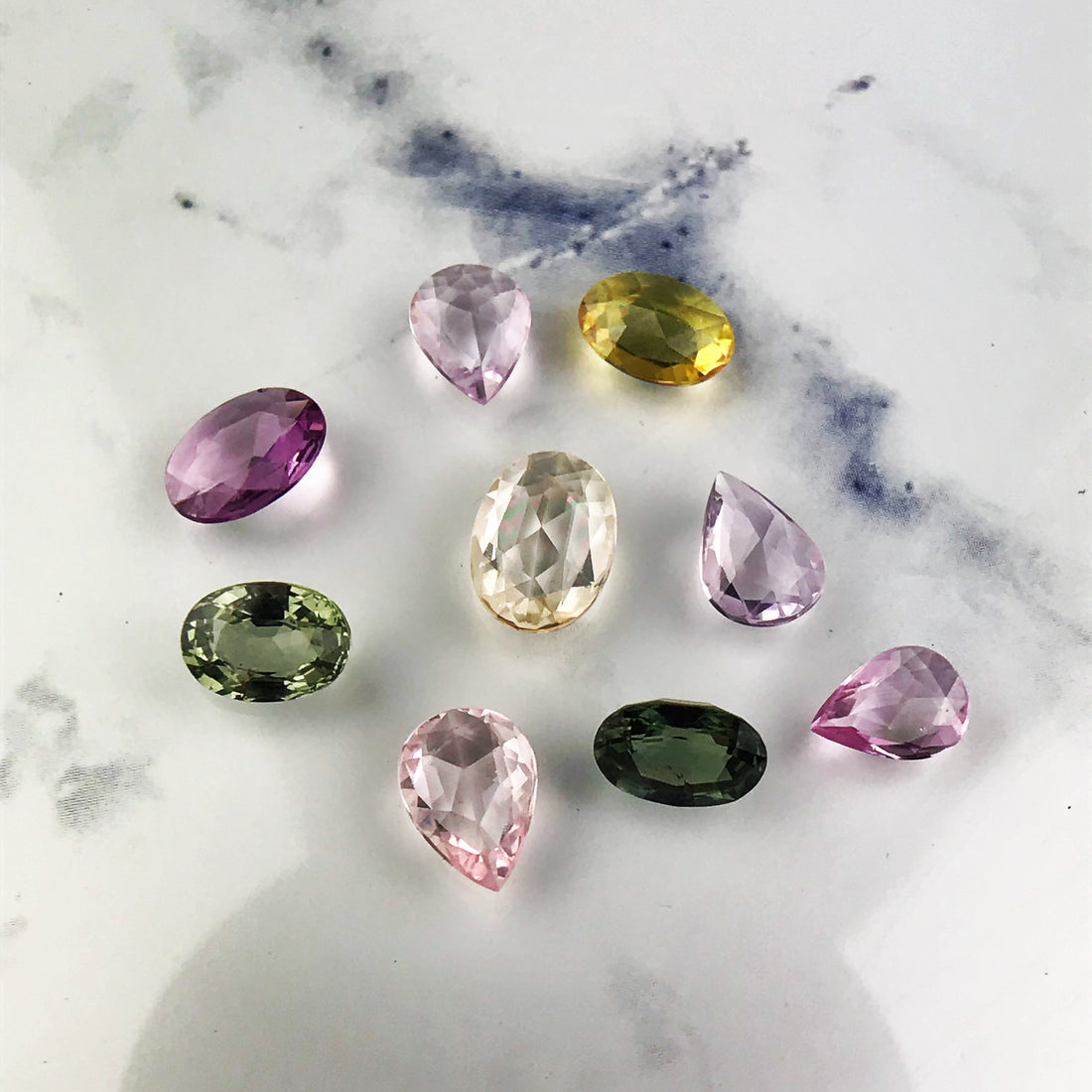
In 1822 German mineralogist Fredrich Mohs composed a scale detailing the hardness of gemstones. The scale details 10 minerals ranked in order of their ability to visibly scratch one other. Position 1 is the softest and 10 is the hardest.
Diamond is positioned at 10 and is infact many times more durable than any other gemstone. This is because diamond is held together by by extremely strong chemical bonds.
MOHS HARDNESS SCALE
- Talc: Talc is the softest mineral on the Mohs scale, easily scratched by even the slightest pressure.
- Gypsum: Slightly harder than talc, gypsum is still relatively soft and can be scratched with a fingernail.
- Calcite: Calcite is a moderately soft mineral that can be scratched with a copper coin or a steel knife.
- Fluorite: Fluorite has a slightly higher hardness than calcite and is typically used in jewelry for its vibrant colors.
- Apatite: Apatite is a gemstone with a moderate hardness and is commonly found in a variety of colors.
- Orthoclase: Orthoclase is a feldspar mineral with a hardness comparable to steel files, making it more resistant to scratches.
- Quartz: Quartz is a widely used gemstone due to its considerable hardness and excellent scratch resistance.
- Topaz: Topaz is a durable gemstone, often used in jewelry, thanks to its hardness and beautiful colors.
- Corundum: Corundum includes gemstones such as rubies and sapphires, which are highly valued for their hardness and luster.
- Diamond: Diamond holds the highest position on the Mohs scale, representing the pinnacle of hardness. Its exceptional durability makes it the hardest known mineral.
Gemstone Hardness and Claddagh Jewelry Design:
When crafting claddagh rings, the selection of gemstones requires careful consideration to strike a balance between design and durability. While softer gemstones may possess captivating beauty, they are more prone to scratching and require special care to protect their delicate surfaces. In contrast, harder gemstones, such as diamonds and corundum, offer greater resistance to everyday wear and tear, ensuring longevity and durability.
Designers often opt for gemstones with a higher position on the Mohs scale to ensure the longevity of their creations. Quartz, topaz, and corundum are popular choices, as they combine remarkable hardness with an array of colors that complement the claddagh design. These gemstones can withstand the rigors of daily wear while enhancing the aesthetic appeal of the jewelry.
However, softer gemstones can still be incorporated into claddagh rings by taking appropriate protective measures. Setting techniques, such as bezel settings or protective prongs, can safeguard the gemstone from accidental impacts and minimize the risk of scratching. Additionally, educating the wearer about proper care and maintenance, including avoiding harsh chemicals and removing jewelry during rigorous activities, can help preserve the gemstone's beauty and minimize the potential for damage.
Gemstone hardness plays a crucial role in the design and creation of claddagh jewelry. Understanding the Mohs hardness scale and its implications allows designers to select gemstones that balance both aesthetic appeal and durability. By considering the hardness of gemstones and employing suitable protective measures, designers can create stunning claddagh jewelry that showcases the beauty of gemstones while ensuring their longevity and resilience in the face of everyday wear.
